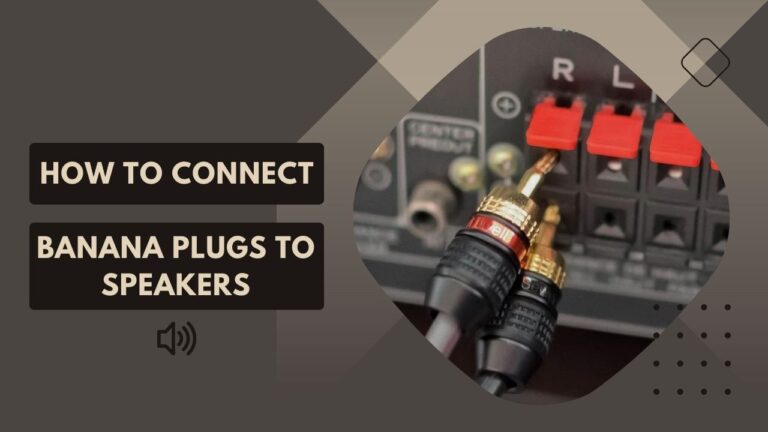In the world of audio equipment, the smallest details can make a significant difference in sound quality. One such detail is the connection between your speaker cables and the speakers themselves. Enter the banana plug – a simple yet effective tool that ensures a secure and high-quality connection. Before we explore the ‘how-to’, it’s essential to understand why they’re beneficial.
Why Someone Would Use Banana Plugs:
- Safety: They prevent accidental short circuits by keeping the wires separated.
- Convenience: They make connecting and disconnecting speakers a breeze.
- Clean Look: They offer a neat and organized appearance to your audio setup.
- Sound Quality: They ensure a consistent and solid connection, which can improve sound quality.
Types of Plugs
Before you start, it’s good to know that there are different types of banana plugs available:
- Open Screw Type: These have a screw that you loosen to insert the speaker wire and then tighten to secure it.
- Closed Screw Type: The wire is threaded into the back, and a screw is tightened to hold it in place.
- Spring Type: These have a spring mechanism that grips the speaker wire when inserted.
Tools and Materials Needed
To connect banana plugs to speakers, you’ll need:
- Speaker wires
- Banana plugs
- Wire strippers or scissors
- Screwdriver (depending on the type of banana plug)
Preparing the Speaker Wire
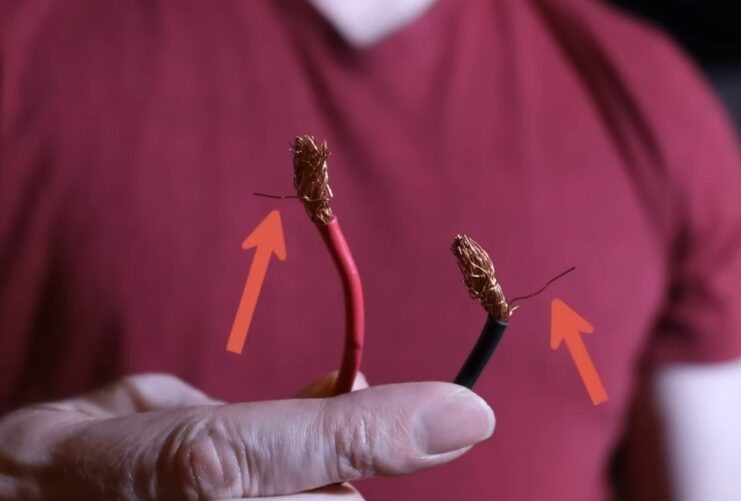
- Step 1: Measure and cut the speaker wire to the desired length.
- Step 2: Using wire strippers or scissors, strip about 1/2 inch to 3/4 inch of insulation from the end of each speaker wire. This will expose the bare wire.
- Step 3: Twist the strands of the exposed wire tightly to ensure they’re bundled together. This prevents stray wires from causing short circuits.
Connecting the Plug
For Open Screw Type:
- Step 1: Unscrew the casing of the banana plug.
- Step 2: Insert the twisted end of the speaker wire into the hole at the base of the plug.
- Step 3: Tighten the screw to secure the wire in place.
- Step 4: Screw the casing back onto the banana plug.
For Closed Screw Type:
- Step 1: Unscrew the back of the banana plug.
- Step 2: Thread the speaker wire through the back until the twisted wire protrudes from the front.
- Step 3: Tighten the screw to hold the wire.
- Step 4: Screw the back of the plug back on.
For Spring Type:
- Step 1: Press down on the spring mechanism.
- Step 2: Insert the twisted wire into the hole.
- Step 3: Release the spring to grip the wire.
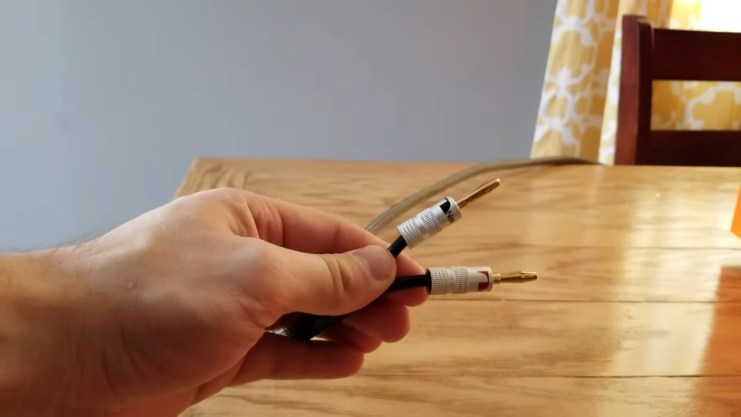
Connecting to the Speaker
- Step 1: Locate the speaker terminals onthe back of your speaker. You’ll typically find two terminals – one red (positive) and one black (negative).
- Step 2: Insert the banana plug connected to the positive wire (often red or marked with a stripe) into the red terminal.
- Step 3: Insert the banana plug connected to the negative wire into the black terminal.
- Step 4: Ensure the plugs are securely inserted.
Tips for a Secure Connection
- Always ensure the speaker wire is firmly held by the banana plug.
- Regularly check the connections to ensure they remain tight and secure.
- Avoid tugging or pulling on the speaker wires to prevent them from coming loose.
The Benefits of Regular Maintenance
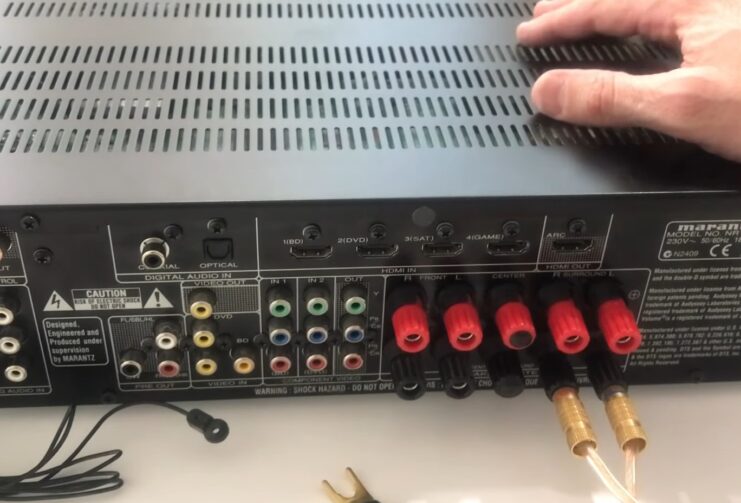
While connecting banana plugs to speakers is a one-time task, maintaining them is an ongoing responsibility. Regularly inspecting and cleaning your connections can prevent potential issues and ensure consistent sound quality.
- Inspecting the Connection: Every few months, it’s a good idea to check the tightness of the banana plugs. Over time, vibrations from the speakers or general wear and tear can cause them to loosen.
- Cleaning the Plugs: Dust and oxidation can accumulate on the plugs, affecting the connection quality. Use a clean cloth and a bit of contact cleaner to wipe the plugs and the speaker terminals. This ensures a clean and efficient connection.
Troubleshooting Common Issues
Even with the best care, you might encounter some issues. Here are common problems and their solutions:
- Intermittent Sound: This could be due to a loose connection. Check the tightness of the banana plugs and ensure they’re securely inserted into the speaker terminals.
- Distorted Sound: This might be a sign of a damaged speaker wire or a short circuit. Inspect the wire for any visible damage and ensure no stray wires are touching each other.
- No Sound: Ensure the speaker wires are connected to the correct terminals (positive to positive, negative to negative). Also, check your audio source and amplifier settings.
Upgrading Your Setup
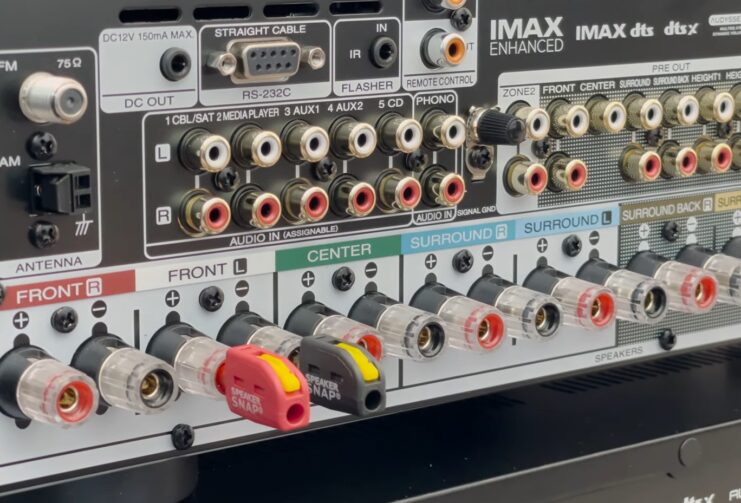
As you delve deeper into the world of audio, you might consider upgrading your equipment. When you do, remember that the quality of your connections remains crucial. High-quality banana plugs made of gold or other premium materials can offer even better conductivity and longevity.
FAQs
Why should I use plugs instead of directly connecting speaker wires?
Using banana plugs offers several advantages:
- Safety: Banana plugs prevent accidental short circuits by keeping exposed wires separated.
- Convenience: They simplify the process of connecting and disconnecting speakers, especially if you often switch or move equipment.
- Aesthetics: They provide a cleaner, more organized look to your audio setup, eliminating the messy appearance of exposed wires.
- Sound Quality: A consistent and solid connection via banana plugs can lead to better sound transmission and quality.
Are there different kinds of plugs?
Yes, there are primarily three types of banana plugs:
- Open Screw Type: These have a screw that you loosen to insert the speaker wire and then tighten to secure it.
- Closed Screw Type: The wire is threaded into the back, and a screw is tightened to hold it in place.
- Spring Type: These utilize a spring mechanism that grips the speaker wire when inserted.
How often should I check and maintain my banana plug connections?
It’s a good practice to inspect your banana plug connections every few months. Regular checks ensure that the plugs remain tight and secure. Additionally, cleaning the plugs and speaker terminals from dust and oxidation can prevent potential connection issues and maintain optimal sound quality.
I’m experiencing sound issues after using banana plugs. What could be the problem?
If you’re facing sound issues after connecting banana plugs, consider the following:
- Loose Connection: Ensure the banana plugs are securely inserted into the speaker terminals.
- Wire Polarity: Double-check that the speaker wires are connected to the correct terminals (positive to positive, negative to negative).
- Damaged Wire: Inspect the speaker wire for any visible damage or signs of wear.
- Short Circuit: Ensure no stray wires are touching each other or the back of the speaker or amplifier.
Are premium or gold-plated banana plugs worth the investment?
Premium or gold-plated banana plugs can offer better conductivity and resistance to oxidation compared to standard plugs. This can lead to a more stable connection and potentially improved sound quality.
If you’re an audiophile or looking to optimize your audio setup, investing in high-quality banana plugs might be worth considering. However, for casual listeners, standard banana plugs should suffice.
Final Thoughts
Connecting banana plugs to speakers is a simple yet impactful step in enhancing your audio setup. It’s about ensuring every detail, no matter how small, is attended to. By understanding the importance of a secure connection, regularly maintaining it, and troubleshooting issues promptly, you can enjoy an uninterrupted and high-quality audio experience.
In the realm of sound, it’s often the nuances that make all the difference. So, take the time to perfect those nuances, and let your audio system sing its best song. Whether you’re a casual listener or an audiophile, the journey to impeccable sound is always worth the effort.
Related Posts:
- How To Connect Multiple Bluetooth Speakers -…
- How To Connect Speakers To A Projector? Say Goodbye…
- How To Play Xbox 360 On Laptop With HDMI Cable? -…
- Razer Ouroboros Gaming Mouse - Transform the Way You Play
- Spotify Can't Play Current Song: 10 Simple Fixes
- VIVO Y31 Specifications Revealed on Google Play…

